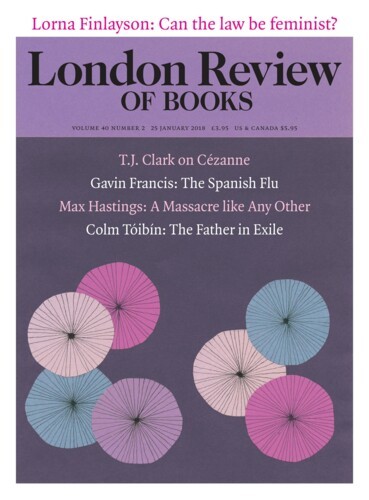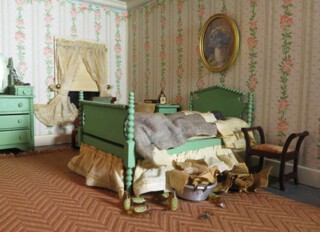Behind the White House, next to Blair House, is the formidable Renwick Gallery of the Smithsonian American Art Museum. Murder Is Her Hobby: Frances Glessner Lee and the Nutshell Studies of Unexplained Death (until 28 January) exhibits 19 ‘nutshells’, each one an exquisite example of miniature art in which a little doll has been stabbed to death, or drowned in the bath, or gassed by carbon monoxide; she may have hanged herself on the laundry line (or is it just supposed to look that way?), jumped or been pushed off a high balcony – or was she shot first?
Frances Glessner Lee, a Gilded Age Chicago heiress whose family made a fortune in farm equipment, had no training in forensic science, but after making a large donation to Harvard in 1945 she started leading seminars there on what she called ‘legal medicine’, though she ‘found that no one, including alas! my own self, knew exactly what legal medicine was supposed to mean’. She proceeded intuitively, from a conviction that more violent crimes would be solved if only policemen were more observant at crime scenes (she was a great reader of Sherlock Holmes). The ‘Nutshell Studies’, as she called them, weren’t ‘designed as crimes to be solved – they are, rather, designed as exercises in observing and evaluating indirect evidence, especially that which may have medical importance’. Most of the dioramas contain all the clutter and complications of mid-century American houses, just on a scale of one foot to an inch. It can take hours of staring at everything in the rooms – not just at the guns and blood splatters (probably painted with nail varnish, and purplish with age), but at dirty dishes (Lee didn’t think a woman would commit suicide without doing them), a misplaced chair, a missing thread – just to figure out which of the scenes are meant to represent murders, never mind whodunit. The minuscule lamps in the dioramas work, and the Renwick also provides visitors with torches.
Usually the nutshells are kept in the Baltimore office of the Maryland chief medical examiner (on long-term loan from Harvard Medical School) as teaching tools for investigators, but the Renwick exhibition insists that they should be more widely admired for their craftsmanship. The dioramas weren’t intended to represent actual cases, but Lee was often inspired by stories in the news, usually of working-class women who’d died mysteriously at home. Working from police reports, she would place classifieds in local papers requesting permission to measure and photograph particular pieces of furniture, which her carpenter Ralph Mosher would then re-create using jeweller’s tools and dental instruments. Everything works: window blinds, whistles, pencils, mousetraps; a coffee pot even has a working strainer, and tiny keys fit into almost microscopically tiny locks. Lee made the dolls herself, colouring their skins to indicate their exact stage of rigor mortis, using lacemaking needles.
Lee’s family was appalled by how much she spent on each nutshell (usually at least $6000, enough for a house); one of her relatives said that ‘she’d make a wonderful study for a psychiatrist,’ and the Boston Globe dismissed her as a ‘rich eccentric’ with a ‘compulsion to play with and murder dolls’. But for her contribution to forensic science, the New Hampshire State Police made her an honorary captain, which allowed her to be the first woman to join the International Association of Chiefs of Police. She died, of natural causes, in 1962.
Send Letters To:
The Editor
London Review of Books,
28 Little Russell Street
London, WC1A 2HN
letters@lrb.co.uk
Please include name, address, and a telephone number.


